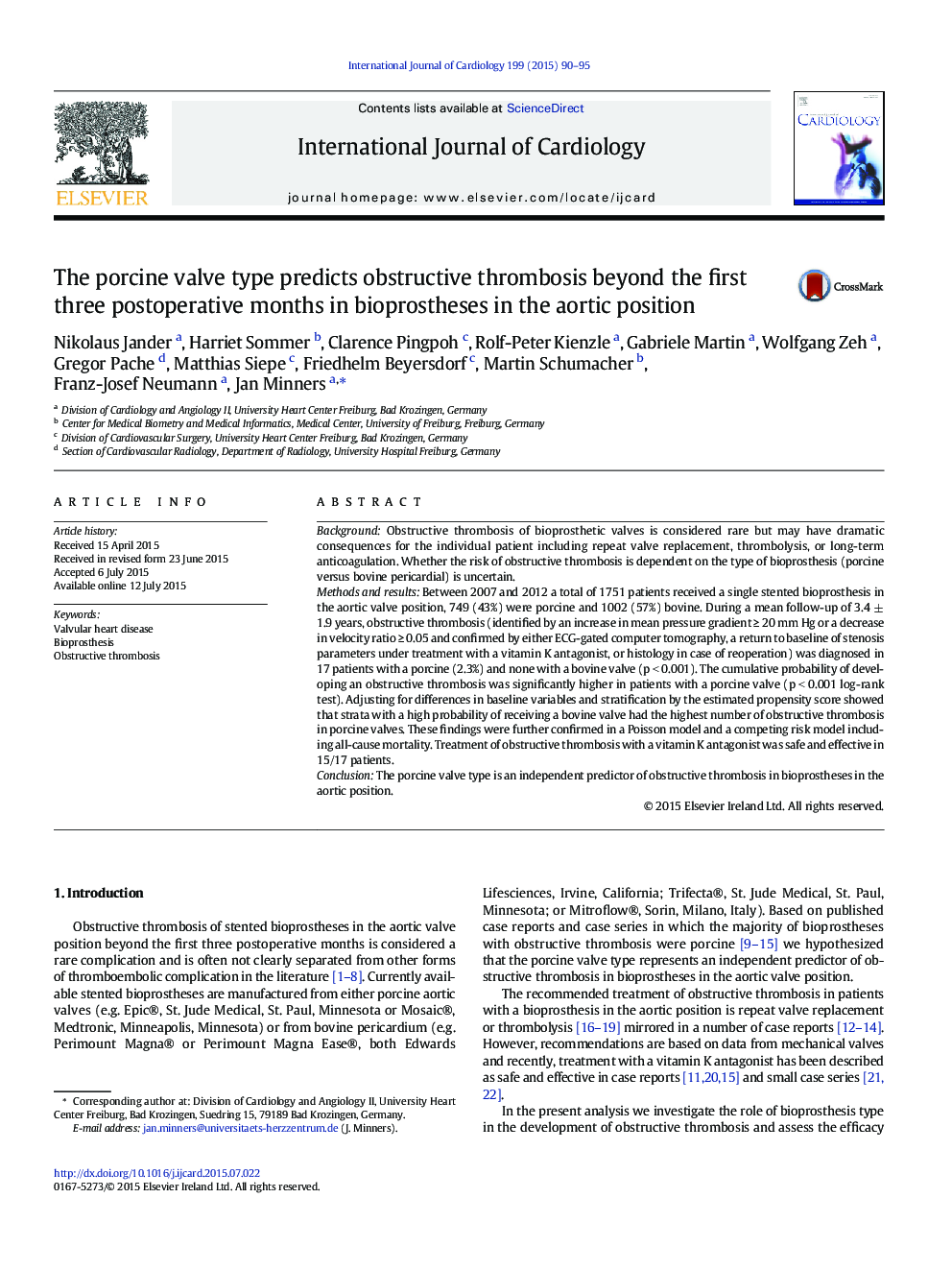| Article ID | Journal | Published Year | Pages | File Type |
|---|---|---|---|---|
| 5965840 | International Journal of Cardiology | 2015 | 6 Pages |
BackgroundObstructive thrombosis of bioprosthetic valves is considered rare but may have dramatic consequences for the individual patient including repeat valve replacement, thrombolysis, or long-term anticoagulation. Whether the risk of obstructive thrombosis is dependent on the type of bioprosthesis (porcine versus bovine pericardial) is uncertain.Methods and resultsBetween 2007 and 2012 a total of 1751 patients received a single stented bioprosthesis in the aortic valve position, 749 (43%) were porcine and 1002 (57%) bovine. During a mean follow-up of 3.4 ± 1.9 years, obstructive thrombosis (identified by an increase in mean pressure gradient â¥Â 20 mm Hg or a decrease in velocity ratio â¥Â 0.05 and confirmed by either ECG-gated computer tomography, a return to baseline of stenosis parameters under treatment with a vitamin K antagonist, or histology in case of reoperation) was diagnosed in 17 patients with a porcine (2.3%) and none with a bovine valve (p < 0.001). The cumulative probability of developing an obstructive thrombosis was significantly higher in patients with a porcine valve (p < 0.001 log-rank test). Adjusting for differences in baseline variables and stratification by the estimated propensity score showed that strata with a high probability of receiving a bovine valve had the highest number of obstructive thrombosis in porcine valves. These findings were further confirmed in a Poisson model and a competing risk model including all-cause mortality. Treatment of obstructive thrombosis with a vitamin K antagonist was safe and effective in 15/17 patients.ConclusionThe porcine valve type is an independent predictor of obstructive thrombosis in bioprostheses in the aortic position.
